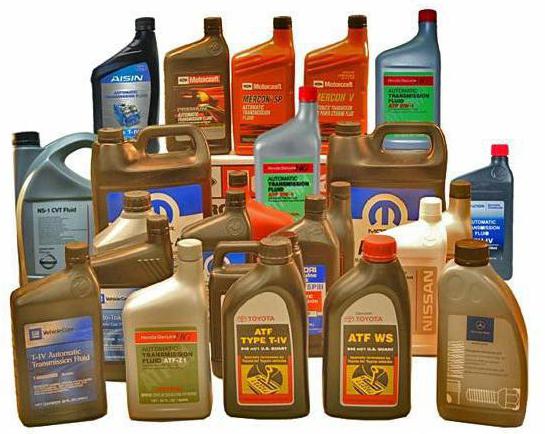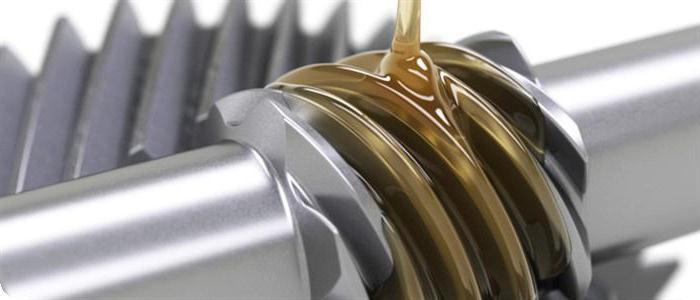Lubricant products needed for transmission mechanisms do not receive much attention. Lubrication in gearboxes is not replaced as often as in the engine. Transmission oils are lubricants whose main function is to form a protective film on each gearbox gearbox, transfer cases, axles and differentials. With motor, everything is more or less clear. Let's study the brands of gear oils and their characteristics. This is very useful information for novice car owners.
general information
Regardless of the brand of transmission oil, the product is based on the extract obtained during the selective purification of petroleum lubricants. Various distillate products and additives are also added here. The latter are often based on phosphorus, sulfur, molybdenum disulfides and other similar substances.
Before cars equipped with highly loaded transmission mechanisms began to appear in the world, nigrol was used as a lubricant. Its viscosity was from 6 to 20 mm
2 / s at a temperature of 100 degrees. Open gears worked due to viscous residual lubricants with additives. Their viscosity is from 50 to 500 mm
2 / s at a temperature of 100 degrees.
Why gear oils are needed
We reviewed briefly why lubrication is needed in the transmission system. These products are needed to reduce friction during the operation of gears and other mechanisms. Due to the use of lubricants, the wear of transmission components is significantly reduced, and friction energy losses are reduced. Due to the oils, excess heat is removed from the parts. The surfaces of gears and mechanisms are protected from corrosion. In various countries they use their oils. They are also classified in different ways.
Russian standard
Brands of gear oils and their characteristics in Russia are strictly regulated by GOSTs from Soviet times. As the main document, in which all information on lubricants for transmission units and assemblies is systematized, GOST 17479.2-85 is used. This standard provides for four groups of greases. They differ in viscosity - these are 9, 12, 18 and 34.
All existing products are divided into classes according to the result of viscosity measurements at a temperature of 100 degrees. The second indicator is the minimum temperature at which the dynamic viscosity is not more than 150 Pa / s.
Transmission oils, their brands and characteristics can be divided into five main groups. The first is products that do not contain additives. In the remaining groups, these components are allowed. The effectiveness and characteristics of additives increase in the same way as the group number. The fifth category includes oils of a wide range of applications.
First group
This class includes materials that consist only of mineral components and do not contain additives. These greases are designed to work in a worm gear, bevel, cylindrical. Permissible preliminary contact load is from 900 to 1500 MPa at temperatures up to 90 degrees.
Second group
They are also mineral-based oils, but they contain various additives that protect the components from wear. These brands of gear oils and their characteristics are suitable for use in worm, cylindrical, and other gears, where the contact load is up to 2100 MPa at temperatures up to 130 degrees.
Third group
These are anti-seize mineral lubricants. The additives in these products work moderately. These lubricants are used with spiral-canonical gears, cylindrical, hypoid. Here, the ultimate load is up to 2500 MPa and the temperature reaches 150 degrees.
Fourth group
These are oils with high level extreme pressure additives. They are designed for gears where the maximum load does not exceed 3000 MPa at a maximum temperature of 150 degrees. One of their representatives is Lukoil gear oils, the characteristics of which allow them to be used for passenger cars.
Fifth group
These are universal lubricant products containing universal additive packages. Often they are multifunctional. The maximum contact load is not more than 3000 MPa, and the maximum temperature is not more than 150 degrees.
How to label domestic products
Brands of gear oils and their characteristics are encrypted in a special code. It looks approximately as follows: TM-5-9 (3). Here TM says that the product is a transmission oil. The number 5 reports that it is a multi-functional anti-seize product. Values of 9 and 3 indicate that it is a low viscosity material with a thickening agent content.
What characteristics should gear oil have
Today, a variety of transmission mechanisms are used with their types of gears and gears. Therefore, depending on the design of the unit, type of transmission and other parameters, the characteristics of transmission oils are determined.
A good product should have the following set of characteristics:
- The grease should have high extreme pressure and antiwear properties.
- The product also has high viscosity characteristics at any temperature. This ensures high-quality lubrication when the gearbox has to work on a cold one. These characteristics allow the product to provide the desired level of viscosity.
- Transmission oil must have a low level of corrosiveness. This is important for parts made of non-ferrous metals.
- A special characteristic is stability during thermal oxidation. This ensures a constant level of viscosity.
- Another important parameter is a high level of protection against rust and minimal impact on seal materials.
API classification
Brands of gear oils and their characteristics are also classified by the API system. This is something like Russian GOSTs. But here not only the viscosity itself is taken into account, but also the medium for which one or another lubricant is suitable:
- API GL-1 is a basic mineral base that does not contain any additives. It is designed for operation in unloaded nodes and light conditions. These lubricants can be used in mechanical asynchronous gearboxes, as well as in gears - conical and worm.

- GL-2 is a base mineral oil and anti-seize additive. This protection is quite effective if it is used in mechanisms with an average level of load. These greases are widely used for land transport and agricultural machinery.
- In addition to the base oil, GL-3 also contains additives for protection against wear. Their number is 2.7% of the total composition. These brands of gear oils are recommended for medium loads in bevel gears of trucks. Do not use these products in hypoid gears.
- GL-4 is a universal oil designed for any load. The composition has a basic mineral base and anti-seize additive in an amount of 4%. These greases are widely used in drive axles, in gearbox systems without synchronizers. For synchronized gearboxes, these brands of gear oils are suitable, and their use will make the operation of the gearboxes more efficient. The grease contains more than 50% of various protective additives.

- GL-5 are special products designed to operate under high transmission loads. There are 6.5% additives with enhanced performance. This is a universal gear oil. Its technical characteristics are ideal for highly loaded nodes. But the product is not suitable for any gearbox.
Conclusion
So, we examined the brands of gear oils and their characteristics . As you can see, there is a fairly broad classification of lubricants. When choosing the right gear oil, it is important to look not only at its class and viscosity, but also at the recommendations of the manufacturer.